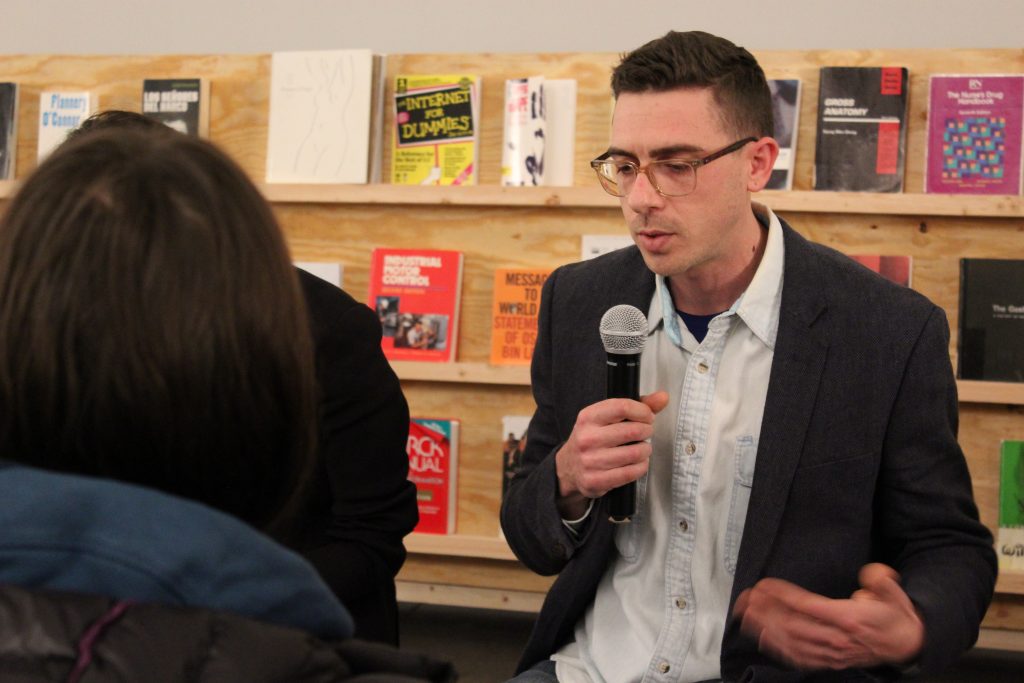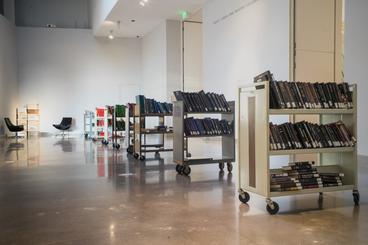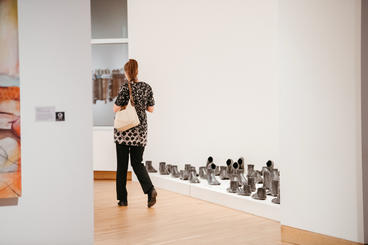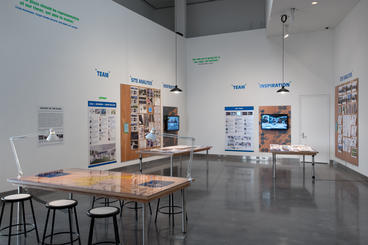Over the last few years I have produced a body of work that focuses on social control. These conceptual art projects have been effective in teasing out and putting on display some of the unseen ways institutions exercise control. The zine project Inmate Activity Book is a perfect example: produced in collaboration with a federal inmate, the final product was censored or confiscated by Bureau of Prisons officials at over 50 Federal Correctional Institutions. The “failed” distribution effort and accompanying paperwork is a case study in the kind of paranoid censorship that has become the Bureau of Prisons’ modus operandi. My latest project focusing on prison censorship, the Section of Disapproved Books, contained hundreds of familiar titles from a variety of genres, demonstrating how widespread the “disapproval” (“censorship” in prison administration lingo) of reading material has become in U.S. prisons.
The Section of Disapproved Books was created by locating the books and periodicals in the library catalogs that can be found on lists of material banned in various U.S. prisons, and assembling those volumes in one location. Containing The Marquis de Sade, Autobiography of Malcolm X , Grant Writing for Dummies, The Vagina Monologues and many other familiar titles, the Section of Disapproved Books has the uncanny ability to evoke strong reactions from visitors ranging from laughter and disbelief to serious reflection. It contains a good deal of scholarship on the justice system, mass incarceration, and the civil rights movement. You will find manuals on self pleasure alongside religious texts and contemporary art monographs. People who visit the Section of Disapproved Books are exposed to an Orwellian reality where institutions limit access to specific histories and forms of knowledge—thousands upon thousands of banned books, right here in the U.S.
The first Section of Disapproved Books was installed at the Northern Spark Festival in the summer of 2018 at the Hennepin County Central Library in downtown Minneapolis. Since then, the Section of Disapproved Books has been exhibited at WAM’s Target Studio for Creative Collaboration during my Collaboration Incubator residency there. Working with Betsy Friesen, the Director of Data Management and Access for U of M Libraries, along with a group of library employees and student workers, and Ray Barney, assistant to the Curator of Creative Collaboration at WAM, lists of disapproved volumes obtained from 22 states were processed, de-duplicated, and used to collect disapproved titles from U of M libraries which were displayed in WAM’s Target Studio.
The Section of Disapproved Books was later shown at St. Catherine University's Libraries in St. Paul and at the New York Public Library. The process of collecting data on disapproved publications is ongoing and will continue as this project finds new libraries to inhabit.
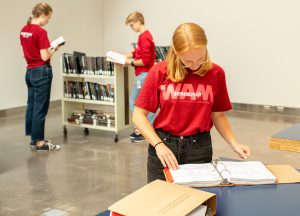
During my incubator residency in WAM’s Target Studio, I met with faculty collaborators from across the university to discuss the University of Minnesota’s relationship to prison labor and the Minnesota Department of Corrections, brainstorming ways in which the university can take active measures to offset some of the harm that mass incarceration has caused communities and families across Minnesota. I was given an invaluable leg-up by criminal justice activist Emily Baxter (We Are All Criminals), who provided me with a list of contacts that would serve as the initial network of faculty collaborators. Each meeting and conversation led to new contacts in and out of the university community; there are now dozens of brilliant minds involved in this project, from undergrads in the design school to civil servants at the MN Department of Human Rights. The main takeaway from these conversations was that the University of Minnesota directly benefits from prison labor in various forms both on and off-campus, through contracts with MINNCOR, the state’s prison industries program. Although this business relationship has existed for many years, the greater campus community remains unaware of its existence—an issue of accountability and institutional ethics that clearly needs to be addressed.
Conversations with faculty from the Law School, School of Architecture, Medical School, Philosophy Department, School of Social Work, Department of Sociology, and Robina Institute for Criminal Law and Criminal Justice laid the foundation for a research collaborative under the name Just Education: Reversing the Ripple Effect of Incarceration’s Impact on Individuals and their Families, supported by the U of M Institute for Advanced Study. Education is one of the only effective means of lowering recidivism, and the U of M is in a position to do what many other leading educational institutions have done: making higher-ed available to incarcerated people (successful programs have been established by Yale, Berkeley, Bard College, and Georgetown University, to name a few). The long term goals of the collaborative include putting opportunities within reach for incarcerated Minnesotans and their families. Starting from GED prep courses and vocational training (the bare minimum—things the Dept. of Corrections has failed to provide), to the ability to pursue a degree in liberal arts, fine arts, computer science, agricultural studies, and beyond.
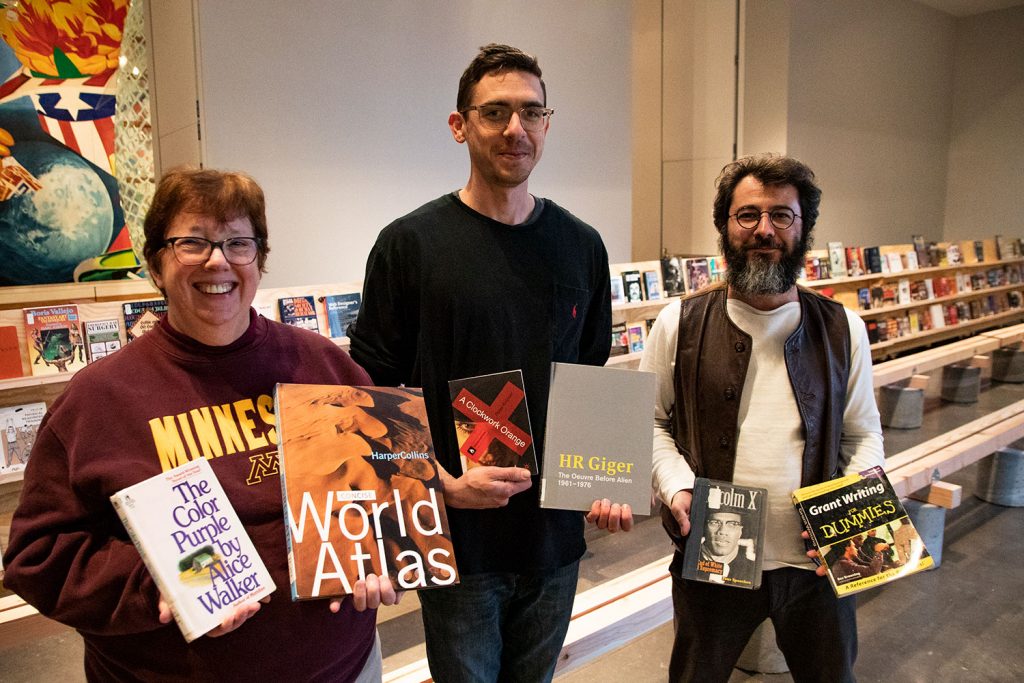
The incubator residency at WAM fostered rapid and serious professional development for me in many respects. My previous experience collaborating with institutions was minimal; my experience working with a curator and museum staff was nil. On the voyage which began as a Section of Disapproved Books, the deliberate direction of curator Boris Oicherman would guide the ship’s rudder. Relentlessly rowing was his assistant Ray Barney; phoning, emailing, and filing FOIA requests with state and federal prisons coast to coast. The wind in our mainsail was the passion brought onboard by Betsy Friesen which, along with the diligence of her crew from U of M Libraries, was truly a windfall. The months of conversations with a growing network of professionals (many of whom are renowned scholars and leaders in their respective criminal justice-related fields) served to further legitimize my practice both on paper and in my own thinking. That these individuals treated me as a colleague throughout this process was a wake-up call. Artistic exploration/intervention/invention is as vital as clinical research and case studies when it comes to actualizing solutions. It is steady work and a renewed challenge with each new step of this project, possible only via the kindness, support, and tenacity of those involved in the Just Education collaborative: Perry Moreiarty, Rebecca Shlafer, Ingrid Nuttall, and all of the faculty collaborators from across the University of Minnesota.
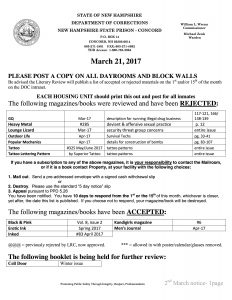
To view the full spreadsheet of Disapproved Titles from Incarceration Facilities, visit z.umn.edu/DisapprovedBooksList
To request a .zip file of the original PDFs and spreadsheets sent by each state’s Department of Corrections, please fill out this form.
To learn more about the process of assembling the database, visit Target Studio Assistant Ray Barney's recent blog post.
